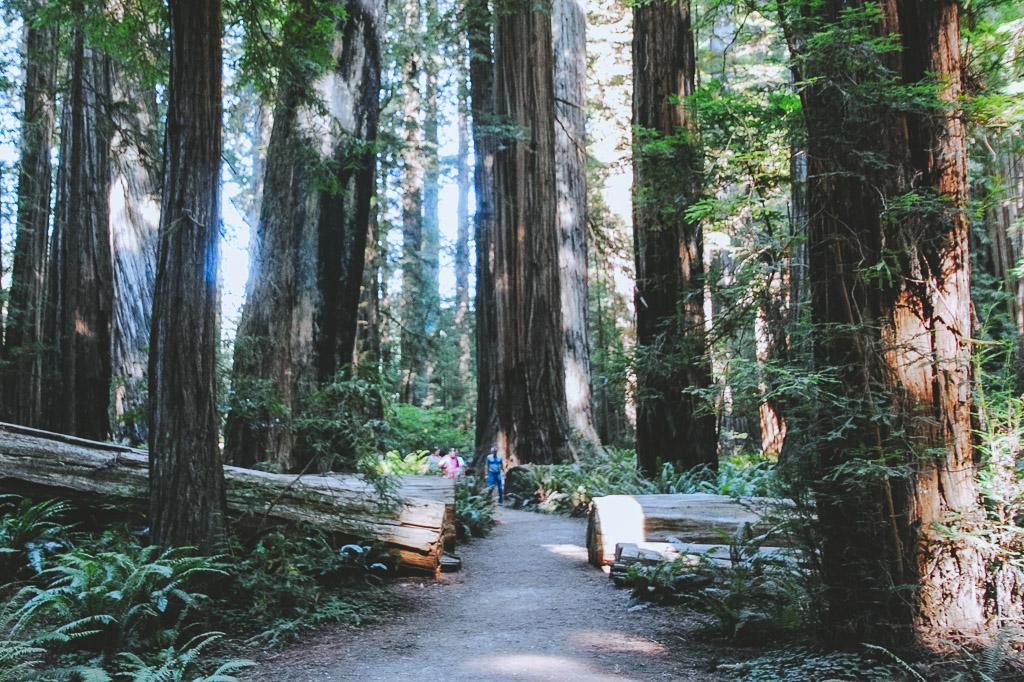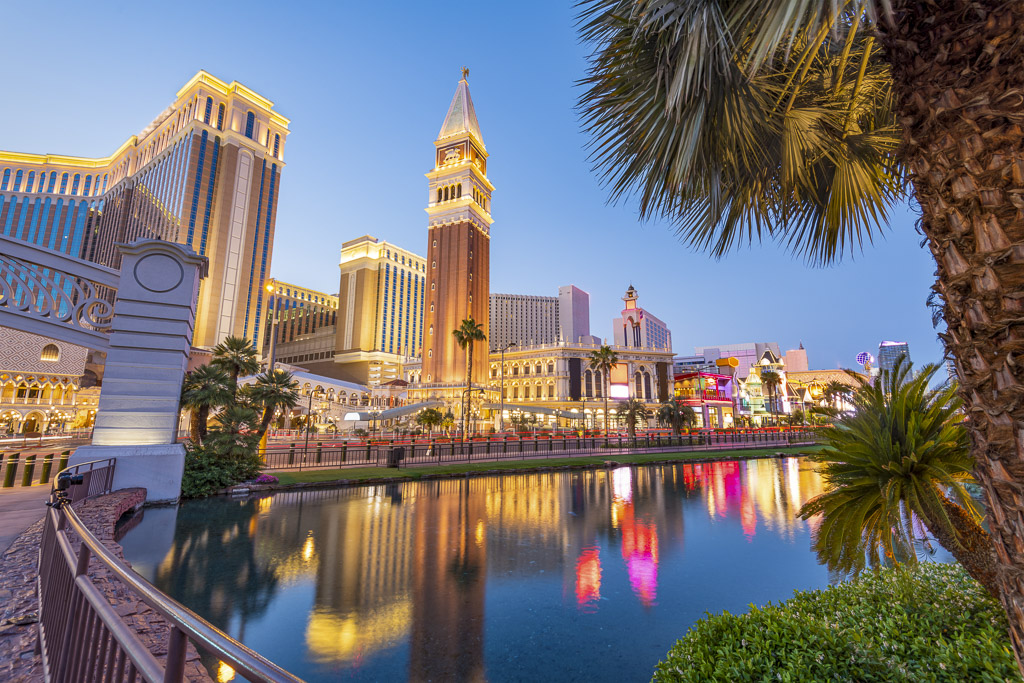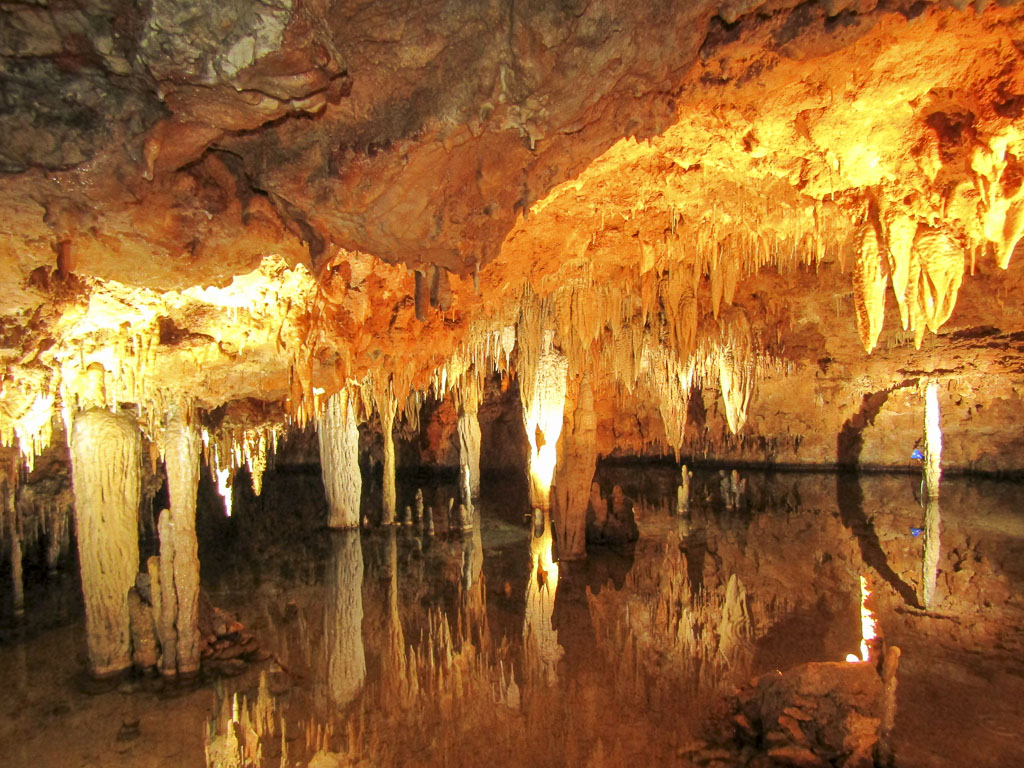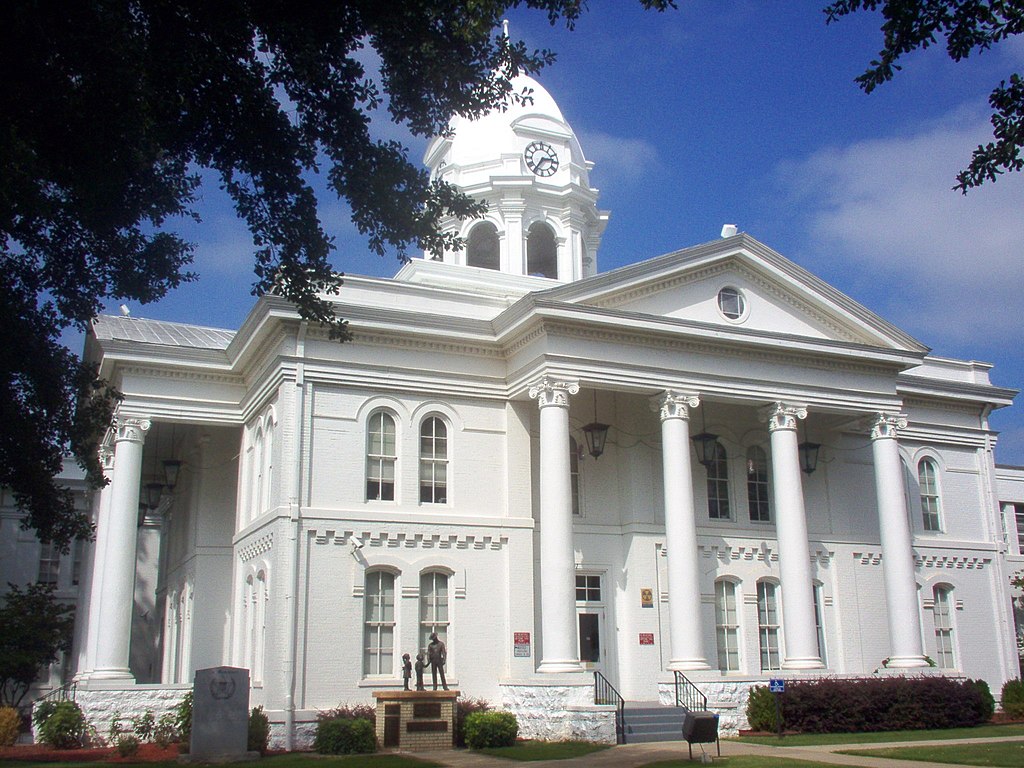Hi, I’m Tori, I’m an Aussie living in the USA, and an avid traveler. Last year, I quit my job and took off to travel for 6 months, starting with a 3-month road trip across the US to visiting as many National Parks as possible! You may have read some of my other stories here on Gypsy With a Day Job, such my Yellowstone Trip Planner, Or my Black Hills Wind Cave National Park Itinerary.
This park is unique in the US, as it is cooperatively managed by the National and State parks systems. The national and state parks here at Redwoods combine across an area of 131,983 acres of great biological diversity. Firstly, the amazing coastal redwood ecosystem, a stunningly majestic forest of enormous trees, then there’s the grasslands and the rugged Pacific Coastline which complete the ecosystem. Trees over 370 feet tall have been recorded in the region, and they live to some 2000 years old.
So, are you ready to hop in the car and head to the Redwoods now? First, let me tell you a little more about Redwoods National and State Park history.
A Short Redwoods National Park History
The redwoods originally grew across a lot of North America, but they are now almost exclusive to this area along the coast in the north of California. The almost permanent mist along the coastline provides the moisture that the redwoods need to grow and makes this area the perfect ecosystem for these beauties. As you can imagine, the trees were considered a wonderful and almost inexhaustible resource to early settlers, and soon began to fall in great numbers as westerners moved in to establish communities in the area in the 1800’s.
The first state parks were founded in the 1920’s to protect this dwindling habitat, and it was in 1968, that the National Park was created by protecting the lands adjacent to the state parks. In 1994 the parks came under joint management, and they are now recognized as a World Heritage Area and International Biosphere Reserve, reflecting the extreme importance of this little ecosystem.
Just to walk amongst these giants is incredible, and throughout the park, there are various groves to explore, each unique in their own character, all home to magnificent Redwood trees, and their supporting and surrounding forest life.
Redwoods Trip Planner
So, are you ready to visit Redwoods National Park and experience this unique natural landscape? Do you want to know exactly what there is to do in Redwoods National Park?
First, let’s discuss getting there, and getting around
Getting to Redwoods National Park
Redwoods National and State Parks are located in Northern California – along the Highway US-101 corridor, around 325 miles north of San Francisco. The parks extend from near the Oregon border, roughly 50 miles south to Orick, California.
Public transportation does service the small communities in the vicinity of the park, however, you will definitely need a vehicle to get around between the different sections of the park.
Small regional airports in Crescent City, McKinleyville, CA and Medford City, OR also service the communities in the area. There are also larger, and more affordable airports in San Francisco, Sacramento, or Portland, Oregon. Either way, you would need to rent a vehicle for transport to the park.
When to Visit Redwoods National Park
The National and State Parks are open year-round, but you may find some facilities closed during the winter season (generally November – May). The Hiouchi & Prairie Creek Visitor Centers are open year-round but check for winter season hours before you visit. The other visitor centers all operate seasonally, usually from May to October.
Given its proximity to the coast you should expect cooler, damper weather at Redwoods National and State Parks. You’ll experience some eerily foggy mornings, as the cool coastal waters meet the warm air. Year round, the temperatures hover between the mid 40’s – mid 60’s, so dress in layers. And, just know that Winter brings rain, and lots of it – the region can receive up to 80 inches total between October and April. Bring your raincoats!!
Places to see in Redwoods National Park
A three-night stay in the region will give you plenty of time to explore the scenic drives through the redwood groves, as well as along the coast, as well as adding on a couple of hikes to really get the feel of being amongst the Redwoods. Travelling north to south, here’s the sights that you simply shouldn’t miss.
Stout Grove

Stout Grove, located in the heart of the Jedediah Smith Redwoods State Park (the northernmost park) is a large grove on the edge of the Smith River. If you’re driving in a car or small van, and enjoy a dramatic entrance, I’d recommend that you approach the grove via Howland Hill Road – a narrow winding dirt road, which at times, passes through enormous trees that are barely far enough apart to fit a car through. The challenge here is getting to the grove, the trail itself, at just a short 0.5 miles is relatively easy.


Stroll amongst the redwoods, and out to the Smith River, where on a fine day, you can stop for a picnic and a paddle. There are several other trails along the Howland Hill Road, stopping to enjoy them might depend on whether you can find a space to park your car.
Coastal Drive Loop

Just south of the Klamath River, take a right and head towards the Pacific Ocean. The Coastal Drive Loop begins on paved road but turns onto unpaved track as it hugs the coastline. Stop at the High Bluff Overlook to admire the rocky Pacific coastline, and then continue on and stop to see the World War II radar station disguised to look like a farmhouse that is tucked into the hillside below the road.




Make sure that you get off US-101 at the southern end of the park to drive the Newton B. Drury Scenic Parkway. This ten-mile drive through the heart of the redwoods is one of a kind and has plenty of trails and pullouts so that you can hop out of the car to explore. Visiting Redwoods National Park wouldn’t be complete without at least one winding and intriguing drive through the forest, so if you’re travelling with an RV or trailer and missed out on Howland Hill Road, then this one is just for you!
I didn’t make it to Gold Bluffs Beach and Fern Canyon but they come highly recommended. Located at the end of a dirt road, six miles from US-101, you may find some long sought-after solitude down here. A developed campground is available to pre-book, but you can also just spend the day down on this sandy beach, wandering the shoreline, paddling in the ocean, and watching out for wildlife. Three miles further along from Gold Bluffs Beach is Fern Canyon, where you can walk beneath the walls of a canyon dripping with ferns. This place is such a unique natural wonder that Steven Spielberg chose is as a location for Jurassic Park 2. There’s an $8-day use fee for Gold Bluffs Beach (unless you have a California State Park or National Park pass).
Trillium Falls

A stop at Elk Meadow lands you at the trailhead to Trillium Falls. This is a fairly easy trail that passes through some stunning redwood groves, and the tiny Trillium Falls. Look right as you cross the steel bridge along the trail – the falls aren’t big, but they’re pretty all the same. The loop trail is around 3 miles long. After your hike, snag a spot at a picnic table at the trailhead, and look out for the resident herd of Roosevelt Elk (if you haven’t already seen them causing a traffic jam on the highway). Big animals are not showcased so much as they are in many other national parks, but if the opportunity arises, seeing the Roosevelt Elk is one of the coolest things to do in Redwoods National Park.


Lady Bird Johnson Grove

This is a delightful ridge top grove, where the Redwoods, shrouded in mist, share the forest with many other trees and shrubs. This one is an easy 1.5-mile hike in the southern section of the park. This grove is dedicated to Lady Bird Johnson – who as First Lady was an advocate for the protection of natural habitats.




Tall Trees Grove

Tall Trees Grove is a permit only location that requires you to drive 6 miles down a winding dirt road to the parking lot. Once there, you have a 1-mile hike down into the grove, dropping 800ft in elevation. Down on the floodplain of Redwood Creek, the trail meanders amongst trees that are up to 350 feet in height, thanks to the grove’s sheltered location.




Other Things to do In Redwoods National Park Include:

Hiking – There are 170 miles of trail in the park, and you can enjoy everything from a five-minute stroll from the car, to a multi-day backcountry hike.
Biking – There’s a few biking trails, including some trails on old logging roads in the backcountry – pick up a map at the visitor center. If you’re more comfortable on the paved surfaces, then from October through April, Newton B. Drury Scenic Byway is closed to traffic on the first Saturday of each month to allow anyone to bike, hike, skate or stroll the road.
Kayaking – For a short time in the summer, there are ranger led kayak tours on the Smith River. Operation of the tours depends on water flow, so check in at the visitor center to see if they’re running.

Ranger programs – During the summer, a variety of ranger programs are organized throughout the parks. Check the NPS website for the schedule during your stay.
Whale Watching – Gray whales call this coastline home. There is even a pod of whales that reside in the area year-round. Head to the Klamath River Overlook to look out for the resident pod, and during the migration season (Nov-Dec & Mar-Apr) grab your binoculars and scan the ocean for a migrating pod of whales.
Entry Fees to Redwoods National and State Parks
Entry to Redwoods National and State park is fee free. A couple of day use areas in the state parks are the exception – Fern Canyon and Gold Bluffs Beach, each charging a day use fee of $8 per vehicle.
Where to Stay in or Near Redwoods National Park
Hotel and motel lodgings are available in close proximity to the parks. The small “town” Klamath is quite charming, and the Klamath Holiday Inn Express is perfectly located along the Klamath River. It has all the amenities you want, plus direct access to the woodlands and river, and there is even a Native American Casino next door.
If you prefer a little more city for your lodging, look for a place in Crescent City, just a short trip from the Northern entrance of the park, or down south of the park towards Eureka. In Crescent City, we like the Oceanfront Inn. In Eureka, the Best Western Plus Humboldt Bay is our top choice.
If you’re camping, then you can sleep amongst the redwoods at Jedediah Smith, Mill Creek and Elk Prairie Campgrounds, and for lovers of the coast, Gold Bluffs Beach provides easy access to secluded beaches. Each of the campground has showers, toilets, running water, bear lockers, fire pits and picnic tables at each site, and some have a mini amphitheater where the park rangers run programs in the evening. Some of these campgrounds are not suitable for large RV’s so check ahead if you’re travelling in an RV.
Make your reservations through the Reserve California system well in advance of your stay.
Camping beneath the redwoods is quite magical, but also comes at a cost – Fees are currently $35 per night. If you’re a little more budget conscious, then you can find a few public campgrounds in the area, and you might find cheaper campsite fees there.
If you prefer a private guest house, or a farm house stay, you can find several amazing options, and even make a reservation now.
While you’re in the area…
Why not consider extending your road trip to visit these other National Parks –
Crater Lake National Park, located in Southern Oregon, is just a 3 ½ hour drive from Crescent City, CA.
Lassen Volcanic National Park is located in North Eastern California, a scenic five hour drive from Redwoods National and State Park.
Safety Tips for your National Park Trip:
- Ensure your vehicle is in good repair and fill up with gas as often as possible. There are gas stations along US-101 nearby, so fill up when you can, especially you plan to head to the more remote sections of the park for the day.
- Carry lots of water at all times. At least a gallon per person is recommended if you are planning any type of outdoor exploration. If it is hot, or hiking is planned, carry even more.
- Pack in layers – always carry a warm layer & a waterproof layer. You’re staying along the Pacific Coast, so rain is quite likely at some time during your stay, so always carry a raincoat in your daypack.
- Always carry a map, and practice safe hiking – be bear aware, and note that the use of bear spray is not permitted in California parks. Let someone know where you’re hiking, and when you should be back.
- Download offline maps so that you can always find your way around the park. Cell service can be spotty, depending on your carrier.
- You’re in earthquake country. Be aware of the signs of earthquake and tsunami and protect yourself. Check the NPS website (https://www.nps.gov/redw/planyourvisit/safety.htm) for more safety tips!
- Keep a safe distance from the wildlife. This includes the elk you might meet on the roadside and the marine mammals you encounter on the beach. These are wild animals, and their behavior can be unpredictable. Protect yourself and the animals by admiring them from a distance.
We hope our Redwoods Trip Planner has gotten you excited about all the amazing things to do in Redwoods National and State Parks! Pin this if visiting Redwoods National Park is in your future!




Tori is an Aussie who now lives in Philadelphia, PA, in the US. She worked for 9 years in the travel industry, and enjoys researching and planning trips as much as she loves the travel itself. Recently she quit her job to travel for 6 months, starting with a road trip across the United States. She is currently on a road trip through New Zealand. You can find more of her adventures at West of Anywhere.






6 thoughts on “Visiting Redwoods National and State Parks”
It is a great place to have an adventure. RV traveling there is really fun and relaxing for the family or even friends.
Jackpot! This was a great post. I have looked far and wide for a good post on the Redwoods that gives specific things to see in the park’s different areas. In your opinion, is there a specific campground in the park that offers the best scenery compared to the others?